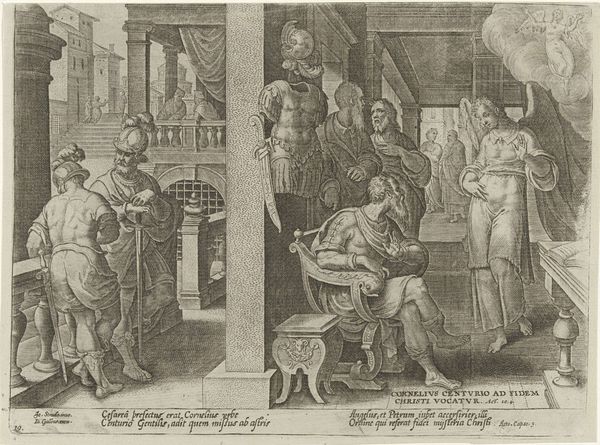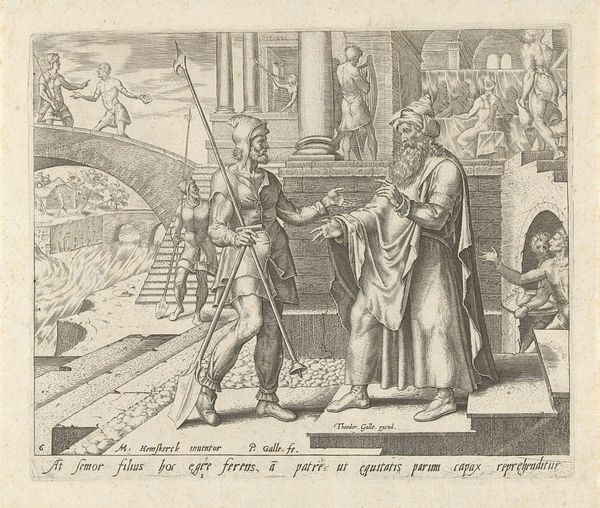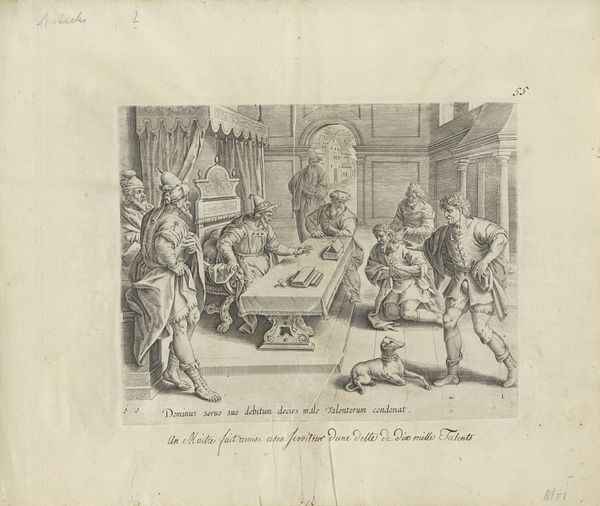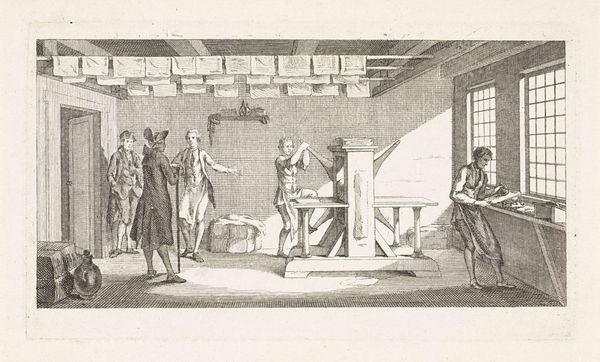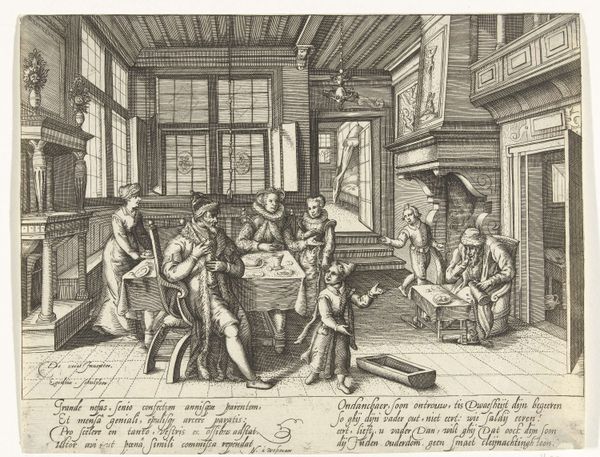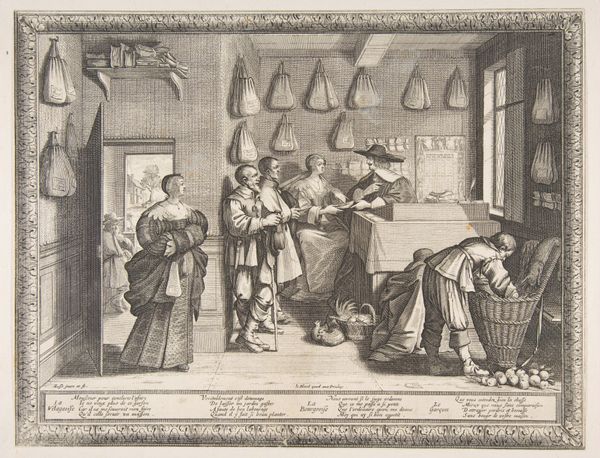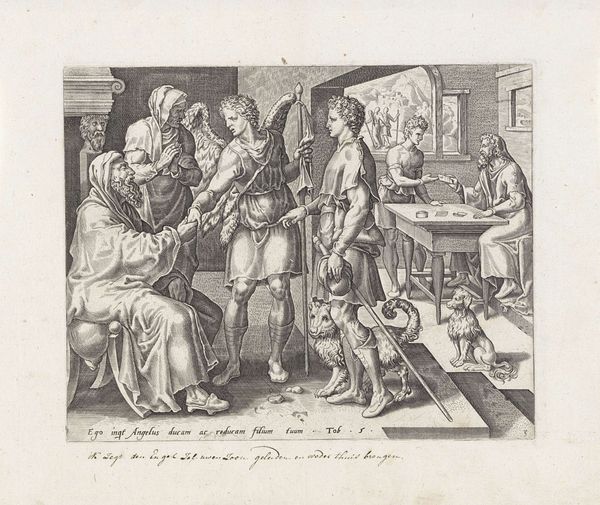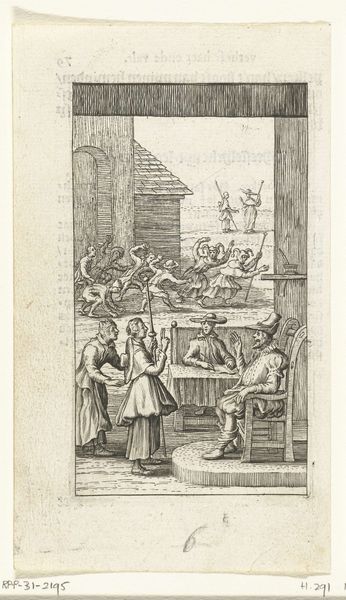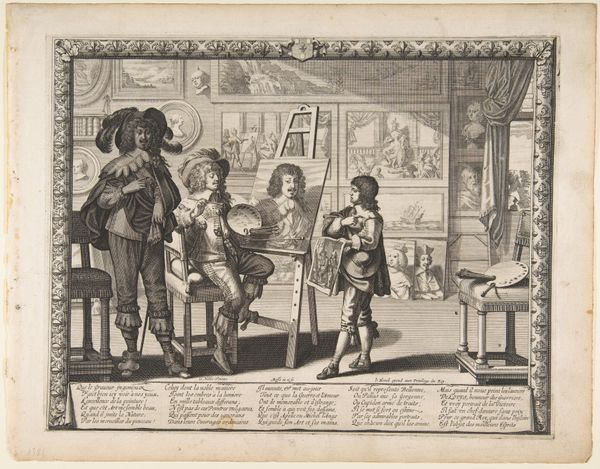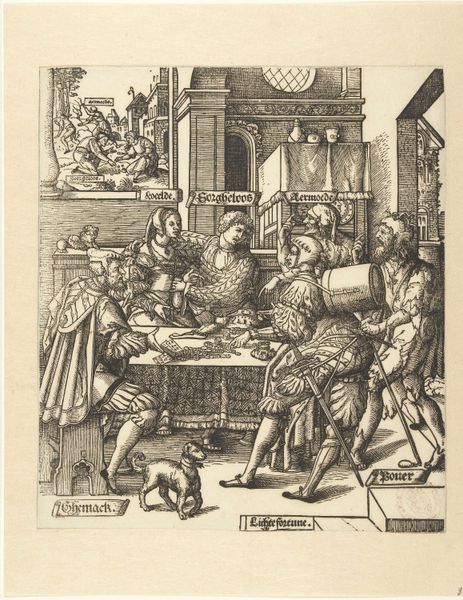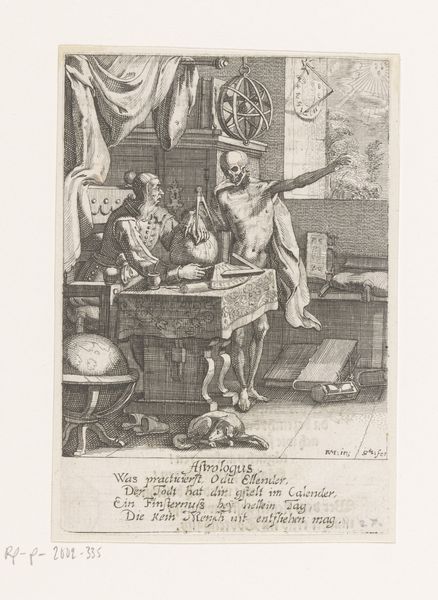
print, engraving
#
narrative-art
# print
#
old engraving style
#
mannerism
#
figuration
#
history-painting
#
engraving
Dimensions: height 200 mm, width 264 mm
Copyright: Rijks Museum: Open Domain
Curator: Standing before us is Philips Galle’s “Vision of Cornelius,” an engraving from 1582, currently held at the Rijksmuseum. Editor: Wow, it's giving me a very theatrical, slightly claustrophobic vibe. All that heavy drapery and armour, and the perspective feels deliberately flattened. Curator: Exactly, Galle was a master of Mannerism. Look at the way he compresses space, juxtaposing different scenes almost like stage sets. We see Cornelius, the Roman centurion, being visited by an angel while also in the background interacting with his soldiers. Editor: The angel’s posture! So fluid, yet stilted at the same time. And there’s something fascinating about the light. Even though it's an engraving, you sense an attempt to capture ethereal luminosity. Light and grace emanating from a higher plane of spiritual significance. It looks as if Cornelius is troubled; what kind of transformation is brewing? Curator: The print depicts a key moment from the Acts of the Apostles. Cornelius, though a devout man, is not a Jew. The angel instructs him to send for Peter, to receive the Gospel, this being a critical moment of understanding between early Christianity and the Gentiles. The story tells of the potential of being transformed, a direct calling by something that stands outside daily understanding. Editor: Yes, there’s a strong current of symbolism. Notice the contrast between Cornelius, surrounded by symbols of earthly power, the soldiers, the armour and, on the right, the openness of that vision, bathed in light and guided by the promise of new life, an almost dreamlike ascension. Curator: The objects around Cornelius act almost as clues; that discarded armour signifies that Cornelius' spiritual revelation involves surrendering his position, and all of its benefits, for a higher calling. It is about inner faith rather than the trappings of the exterior. Editor: It’s fascinating how Galle uses this "old engraving style", imbuing a biblical scene with contemporary fashion and architecture. It becomes so relatable in its time. It serves as an intriguing mirror, showing us how images function as enduring anchors, linking our consciousness to the past, influencing present awareness, and lighting the way for our imagination and understanding of existence. Curator: It certainly makes you contemplate the role of images in shaping our spiritual imagination. I like that very much!
Comments
No comments
Be the first to comment and join the conversation on the ultimate creative platform.
